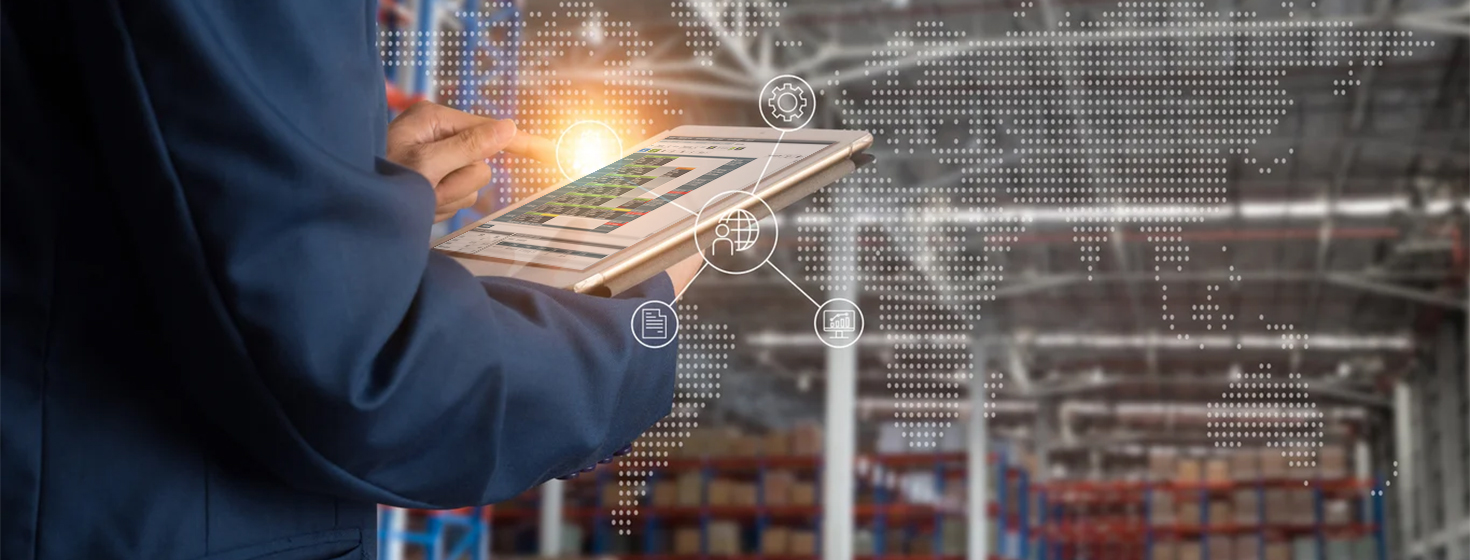Dock Scheduling Systems Maximizes Value
Outbound shipments require optimization to minimize touches and avoid unnecessary dock delays.
The complexity requirements forced companies to adopt a warehouse management system (WMS) or even a warehouse execution system (WES).
Both systems, as well as hybrid versions, are rapidly reshaping the standards of dock and logistics management, and the trend is expected to continue.
According to PRNewswire, “The warehouse management system market is expected to reach USD 4.82 billion by 2024 from USD 2.06 billion in 2018, at a CAGR of 15.2% from 2018 to 2024.”
As a result, more companies will turn to dock scheduling systems to maximize value. But first, supply chain professionals need to understand the challenges of managing the dock without connected systems, how a scheduling system enhances WES and WMS value, and a few tips to maximize ROI.
Challenges of WES and WMS Without Connected Dock Management
Failure to connect dock management resources with the WES and WMS effectively leave money on the table.
Unfortunately, the challenges only grow more severe with time and added supply chain interactions. Such challenges include:
- The facility is currently being operated in an old-fashioned, manual way
- No form or fashion of moving forward
- Efficiency is and will continue suffering
- Work overload on labor, resulting in more overtime hours and less profitability
- The constant flow of goods and products coming in and going out maybe extremely overwhelming
- Chances of forgetting important needs and details are highly likely
- Reports may be hindered or lost entirely due to inefficiency
- Last-minute surprises and their result in a rough change of pace
- A constant lineup of trucks in the yard, resulting in higher dwell time and risk for detention charges
- Truck drivers are continually in your ear about waiting times
- Safety can be compromised
- Maintenance is most likely skipped due to rushing
Dock Scheduling Systems Are Essential to WES and WMS Replenishment and Inventory Management
The Warehouse Management System is more than just an inventory control system.
WMS also provides a means to manage the full flow of merchandise, people, equipment, and orders in the warehouse. The same can be said about the dock scheduling software. Then again, dock scheduling software does more than just appointment direction.
Once implemented into your facility, the system becomes a smart schedule. It intuitively adds the necessary steps to select and apply critical WMS and WES functions without compromising dock safety and efficiency. Multitasking on different operations is all now on one screen.
The overall objective of your facility is to have maximum productivity and a cost-effective organization. The other extreme is constantly running in an unorganized fashion with countless mistakes following right behind you.
How to Meet Customers’ Expectations With Proper Dock Management
There are countless ways to improve customer expectations, but with respect to dock management, dock scheduling software applications must include these 4 key measures:
- Integrate labor management with a dock schedule to avoid over- or under-scheduling
- Manage safety by avoiding overworked staff and maintaining a proper equipment roster and maintenance schedule in tandem
- Take advantage of cross-docking, reducing carrying costs in the facility, and improving profitability
- Let technology by the traffic cops, which as explained by Bridget McCrea of Modern Materials Handling, integrate with your systems and provide the resource for powering data analytics
Put the Power of Dock Scheduling Systems to Work Now
The right dock scheduling systems make or break the efficiency of your warehouse, your replenishment practices, your carrier relationships, and customer service levels.
Stop hemorrhaging money with outdated dock practices; and, request a demo online of the C3 Solutions dock scheduling platform today.
Related Article: Why Automation in Retail Supply Chains Requires Improving Dock Scheduling
Related Retail Resources
Retail Distribution Centre Automation: Using Technology to Stay in the Game
In this paper, you will learn about the changing retail environment and how automation options can be adopted as a means of building the velocity, accuracy, and efficiency it takes to thrive on the retail battlefield. Download Now!
Warehouse Software Systems: The Brains Behind the Operation
In this paper, we look at the absolute fundamental importance of the software systems that underpin distribution center operations: warehouse management systems, warehouse execution systems, and warehouse control systems. Download Now!
Emerging Digital Technologies for the Retail Supply Chain: Strategic Advantage or Big Question Mark?
This paper outlines three rapidly evolving technologies that have demonstrated benefits for supply chain operations; 5G communications, digital twins, and blockchain, and is designed to help you make the critical decisions that will drive your organization forward and stay ahead of the retail game. Download Now!
Artificial Intelligence: Making Machine Learning Analytics Work for Your Retail Operation
In this 'paper' we look at some of the ways warehouse and distribution center operations are evolving, and how to ensure that all your systems are in sync to make the most of new strategies and technologies such as artificial intelligence and machine learning. Download Now!
The Internet of Things: How IoT Is Reshaping Retail The Deal Is in the Data
In this paper, we take an Internet of Things reality check and discovered IoT does have numerous applications for retail operations, but not necessarily where we thought they might be a few years ago. Download Now!
More Resources from C3 Solutions
Article topics
Email Sign Up
























